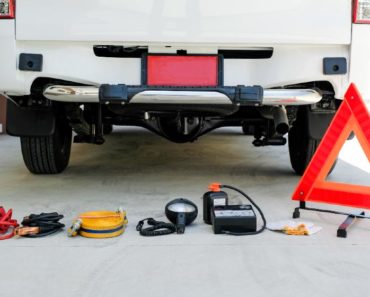There seem to be two options we talk about in the prepping and survival community: bugging in and bugging out. When we talk about bugging out, it seems to always mean bugging out to the wild, specifically finding a place to hide in the woods. I’d like to offer a third option, that of bugging out to suburbia or to a small town. That may not seem like much of an option to those already living there, but to those living in the city center, bugging out to suburbia just might be the best possible option.
Let’s face it, few of us are really trained sufficiently to go out in the woods and survive. We might have dreams of doing just that, but we don’t know enough about building snares to trap food or foraging for edible plants. We think that we’ll live off of hunting big game; an idea that can be quickly dissuaded by talking to any hunter about the years that they didn’t bag anything.
Most of us are city dwellers and that’s all we really know. Oh, we may know a bit about surviving in the woods; but probably not enough. We would quickly find that our bug out bag isn’t enough and that finding enough food to keep us going is a full-time job, all by itself.
On the other hand, just getting out of the city center, with its high population concentration, would be a major plus for survival. When we compare the population density of cities to suburbs, we see a major difference:
- Average population density of the US: 94 people per square mile
- Average population density of metropolitan areas: 2,534 people per square mile
- Average population density of New York City: 29,303 people per square mile
- Average population density of suburban areas: 1,800 to 2,000 people per square mile
- Average population density of rural towns: less than 1,000 people per square mile
While the myth that rural towns have a lot of food and other resources is just that… a myth, the ratio of resources to people will be much better than it is in the center of a major city. About the only time that those towns might have an abundance of food is just after harvest time, while the food is still in the grain silos and hasn’t been shipped off yet.
Pretty much the same thing can be said for any suburban area we might bug out to; at least in the sense of not having an abundance of food. We must keep in mind that the people who live in either the suburbs or a rural town are likely to feel that the resources they have are theirs and not be willing to share. But some resources, like water, are not personally owned. Food can likely be bartered for, at least to some extent.
But the idea isn’t so much that of using the resources they have, especially the food, as it is of having someplace to bug out to, which is less dangerous. Criminal gang activity is more likely to occur in crowded urban areas, than it is in the suburbs. In times of severe long-term crisis, those urban areas may turn into war zones, as people fight for resources.
My recommendation, if you decide to bug out to the suburbs or a rural town, is that you start establishing a supply cache there now. You can rent a small storage space just about anywhere; and the lower the population in the area you’re trying to rent it, the lower the cost. $50 a month, for someplace secure to build your cache, is a worthwhile investment.
That leaves our biggest question, when we bug out, as being where we will stay in these suburbs or small towns. We’re going to need shelter and making a debris hut isn’t going to work out all that well. There probably won’t be a forest floor available, for us to gather the debris from.
Staying with Friends or Family
One option none of us should overlook, is the possibility of staying with friends or family, should we be forced to bug out from our home. That’s been a common solution for centuries and while many families are no longer accustomed to offering that level of hospitality, emergencies tend to bring out the best in people. Your cousin that you haven’t seen in years would probably rather have you in their home, than see you on the street.
Of course, this works much better if you retain a good relationship with the people you would be moving in with. It is always harder to say no to someone you just spent the holidays with, than it is to someone you haven’t seen in five years. Maintaining that relationship can also offer you the opportunity to do a little planning and preparation for such an eventuality, even stockpiling supplies in their home. Just be sure you can trust them, before building that stockpile.
Motels
One of the easiest answers is to find a motel somewhere that you can stay at. This is what typically happens during pretty much any natural disaster, where a general evacuation is called for by city or state officials. More than anywhere else in the country, the residents of Florida are accustomed to packing up the car and heading north, to find refuge from hurricanes in the motels of Georgia and Alabama.
The one problem with this idea is that motel owners are likely to take advantage of any emergency, jacking up their prices. While some states have laws against that, enforcing those laws is difficult. You’re more likely to be able to get a good price for a motel room by building a relationship with the owners, becoming their friends. That means staying at their motel regularly, so that you have a chance to meet and talk to them.
Campground
Public and private campgrounds are the forgotten bug out destination. The funny thing about that, is that as preppers, we all buy camping gear to use when bugging out. Granted, that might be rather minimalistic camping gear; but it’s still camping gear. Staying in a campground is considerably easier than setting up camp in the middle of the woods and it’s unlikely that most people will consider this as their bug out solution.
Of course, having a travel trailer or motorhome makes this a much easier option, as you will essentially have all the comforts of home. Therefore, investing in a used travel trailer might just be a good addition to your survival plans. At the same time, it becomes a much less costly way of taking vacations, giving you more money for prepping.
Camping in Open Areas
I actually lived in a motorhome, traveling full-time, for several years. One of the things that I learned quickly, is that you can camp out anywhere. You don’t have to have a formal campground to camp in. Granted, there are a lot of homeless people doing that today, in our cities, so it would probably be a good idea to make sure you don’t look like them.
One thing that’s necessary, to avoid looking like you’re homeless (even if the disaster has left you homeless) is to avoid camping on streets, sidewalks and other “public” spaces. Find an empty field somewhere that you can use, where you aren’t in people’s way and aren’t making the streets look junky. That will add to the residents there being more likely to accept you.
Of course, if you have the aforementioned camper and park it in an empty lot or field somewhere, you’re not going to look like you’re homeless. I’ve camped in many Wal-Mart and church parking lots. People see you in a different light when you’re in a camper, even an old one (mine was almost ancient).
Abandoned Buildings
Leaving campers and campgrounds aside, one of the simplest shelters you can come up with, just about anywhere, is an abandoned building. Our country is filled with abandoned buildings, ranging from old homes to warehouses, with a lot of small abandoned shops being available in those rural towns. The big box stores have ruined a lot of small businesses, who have left their buildings behind.
There are a number of factors to take into consideration, when looking for an abandoned building to use. First and foremost is the condition of the building itself. You don’t want to use someplace with a leaking roof or that looks like it’s going to fall down on top of you. At the same time, you don’t want to try and use a building where people are likely to notice you and send the police to run you off. Ideally, you want a building that’s in good physical shape, but is a bit isolated, so that people don’t notice you.
As with other options, this is going to take a bit of scouting and preparation. I wouldn’t recommend stockpiling supplies in an abandoned building, as you’re likely to lose them all. However, I would spend some time exploring old buildings in the area you are intending to bug out to, looking for good candidates. Make sure you have some alternate buildings in mind, in case someone beats you to the building you’re planning on using.




![Zach Armstrong [PODCAST] | Survival Life Zach Armstrong [PODCAST] | Survival Life](https://survivalcove.com/wp-content/uploads/2022/04/Can-You-Survive-This-Podcast-370x297.jpg)


![Bug-Out Medicine | Dr. Bones & Nurse Amy [PODCAST] Bug-Out Medicine | Dr. Bones & Nurse Amy [PODCAST]](https://survivalcove.com/wp-content/uploads/2022/03/Modern-Combat-and-Survival-Podcast-370x297.jpg)




















